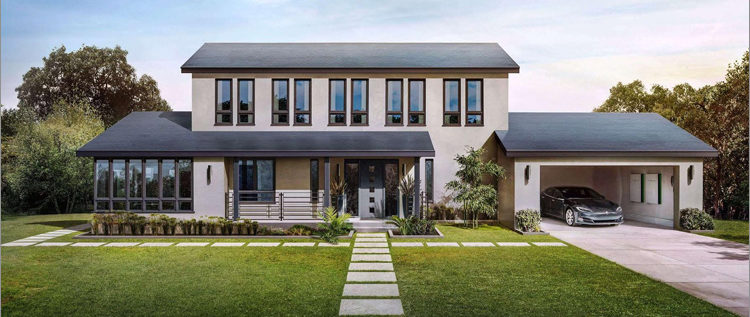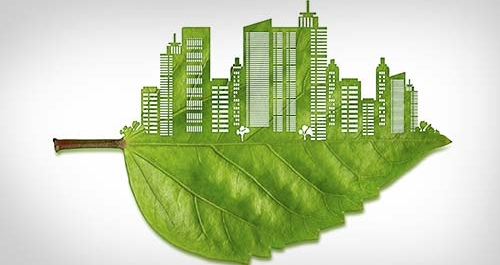E - PAPER
Green Rating Systems – The Grey Areas
Incorporating Green certifications for environmental impact and performance of a building is a worldwide trend today. But are so called Green buildings really environment friendly is the question Realty Plus asked building professionals. The concerns of global warming and rapidurbanization have
 BY
Realty Plus
BY
Realty Plus
Published - Friday, 06 Jul, 2018

Incorporating Green certifications for environmental impact and performance of a building is a worldwide trend today. But are so called Green buildings really environment friendly is the question Realty Plus asked building professionals.
The concerns of global warming and rapidurbanization have led to active environmental movements in promoting eco-friendly buildings. Globally there are various rating systems like LEED and Energy Star in the United States, BREEAM in the United Kingdom, Green Star in Australia, BOMA-Best in Canada, Green Mark in Singapore and IGBC and GRIHA Green ratings in India among others. But, the economic value of a green building certification is the primary motivator for acquiring green certification not only for developers and property owners but also the buyers.
AnshulSinghal, CEO of Embassy Industrial Parks said, “In India, IGBC and GRIHA certifications are customised for Indian climatic condition and are extremely precise, progressive. One has to first wake up to the facts around concept of certification in this category. We must understand that pre-certification is not equivalent to the final certification. It just covers the intent of an organisation to go green. Pre-certification supports the core owners/developers to market their ‘green ideas’ to their potential clients and financial institutes. Pre-certification comes early in design process but this does not actually qualify as the ultimate achievement of all those ‘green dreams’. The one mistake that the marketers probably brush aside is the point where they oversell a ‘great idea’. Pre-certification can be an awesome selling point but there must be matter beneath. Innovations must stand strong in every moral sense.”
Architect PavitraSriprakash, Director and Chief Designer, Shilpa Architects Planners Designersis of the view that Green Rating systems make it easy for people to benchmark their buildings and developments. This makes it easy to globally recognize a truly sustainable project against the various parameters of sustainability.Measurement and verification requirements in green buildings are quite stringent. The advantage to this is that the data is at least available for understanding the performances of systems. The efficiency of this can then be understood and improved as required through the life cycle of the building. “While availing a pre-certification has proven to be a good marketing tool for many developers, there have been several instances where the green initiatives in a project stop with that step. While setting the intention to complete sustainable measures it is equally important for the follow through and implementation as well. The real measure is the final certification and not just the pre-certification stage,’ she stated.
RoshniUdyavar Yehuda, Vice President – Sustainability, ICMQ Certification India P. Ltd. explained, “From a design perspective, the points in green rating systems are achievable. However, from site to site, cost, space and other constraints may arise. This should be strictly banned as it has given people the impression of ‘green washing’. Binding commitments must be ensured from developers by the concerned Green Building Rating System organizations to proceed with the minimum level of certification for such buildings.”
She further elaborated that the Greenness of a building material can be compared through a life cycle assessment (LCA) prepared in accordance with ISO 14040, that summarizes the embodied energy and carbon emissions, pollution and impact on environment and health of people. An Environmental Product Declaration (EPD) is an internationally recognized approach to calculate and disclose quantitative and verified information regarding the environmental features of a product. It is prepared after conducting an LCA (Life Cycle Assessment) based on specific Product Category Rules (PCR) in compliance with the international standard ISO 14025.
Singhalgiving an insight in case of industrial developments briefed that IGBC Green Factory Buildings rating is valid for a period of 3 years from the date of issue of the certification and before the certification, IGBC scrutinizes ‘Design Basis Report’ from all design faculties, efficiency of green areas v/s built areas being proposed in Master Plan and other supporting technical data. “Experts from the IGBC council and third party empanelled Engineers will conduct site visits at various stages of the project. Expert from Bureau of Energy efficiency will carry out an audit, following which the final certification is received. However, at this stage certification is largely a voluntary and consensus based program, IGBC provides guidelines for monitoring during operation stage.”
Titir Dey, Head-Design, Space Matrix Pvt Ltdtalking in context of office spaces said, “Corporates have been very keen to integrate the use of the Green Design and Certification into their projects, especially in the past decade which has brought about a positive change to look for more green frameworks while designing and operating corporate workplaces. Most corporates have internal compliances to meet certain green frameworks (LEED, IGBC, Green Mark, etc.) and rating levels (Platinum, Gold, Silver) alongside their targets to achieve the company’s overall sustainability vision. Green Building Consultants should therefore be brought early into the project discussions so that they can advise upfront on these implications. The earlier the decisions are made, the cost implications could be lower as a lot of early-stage decisions (such as choosing the property) can bring down added costs substantially.”
The cost implications of Green certification for a building owner
Experts agree that the cost implications can be an increase from 5 to 15%. However, thinking green at the planning stage will reduce this cost to a large extent and offer a blueprint for the implementation to be carried out in phases.
Singhal concurring to the fact that the costs are initially high explained that operational cost generally go down. For instance, in a green building, if indoor air quality and lux levels are monitored with occupancy sensors, buildings are oriented along Sun-path and building façade is within specified U Value range, energy spent on cooling the building to ambient temperature is significantly reduced leading to reduction in overall power consumption. Solar panels on the roof will drastically reduce the cost on energy, and add to margins of the developer and the client. It is nothing but pure ‘value addition’ to a workplace and builds hope for a conducive environment.
“Nowadays most material manufacturers have the data readily available on performances, coefficients and values etc. that determine the efficiencies on a sustainability parameter. We often have clients that come in and say – follow the principles but don’t need a rating. There is a notion that the rating is expensive and unnecessary, but really it pushes toward a higher standard for green – so there should be a rating system for every kind of customer so that everyone can achieve these easily.Through an integrated design approach we have delivered a green building at 8% lower cost than the average rate per square foot of a similar office building. So the idea that green costs more is no longer true,” countersSriprakash
Yehudabemoans the lack of monitoring specifically in residential buildings as next to nil. “Some commercial buildings because of their corporate commitments monitor and maintain the green building functions but, most green building owners and rating systems are not willing to share data or conduct research on post occupancy evaluation.”
Dey said that the key factor is that buildings which have met the green rating levels have shown substantial benefits (through well-researched case studies of the benefits achieved) in the areas of lower operational costs and improved occupancy wellbeing, striking a chord with the decision makers. “Recently, the LEED certification came as an internal mandate from many of our clients from varied industries such as pharma, IT & technology, banking & finance, manufacturing, consulting and FMCG.The costs of a green project depends on a lot of factors like baselines for that project, market availability of products and solutions in that region as well as rating levels and frameworks (LEED, IGBC, Green Mark, Green Star, etc.).”
A general rule of thumb is to carefully evaluate the project’s additional costs for any green framework as a lot of times the upfront costs could be discouraging. There are both tangible and intangible benefits and need to be looked into holistically as to what works and does not work for a particular organisation.
The paradigm change in design& development approach
There has been a paradigm shift in how people in general want to see development around them. They are becoming increasingly interested in methods being adopted by developers for energy efficient or high-performance properties. In addition to sustainability, getting experienced architects on board is also helping to create quality spaces on limited budgets.
“Focus now is more to reconcile profitmaking with a broader strategy for social change and an increased quality of life over a longer period of time which is pushing people to deliver on innovative and creative solutions.At the end of the day, the market is now placing the highest premium on things that are unique in implementing sustainable features which help in reducing operational costs,” mentioned Singhal.
Architect Sriprakash feels that managing and reducing carbon footprints as part of a low carbon strategy, with its inherent cost benefits and revenue opportunities, is increasingly important in building design. Building green is one of the best strategies to temper negative climate change because the technology to make substantial reductions in energy and CO2 emissions already exists. Current design practices are leaning toward technology as the answer for all design gaps.
Talking of amalgamating the new technology and vernacular design principles, she said, “While technology is a tool, there is a lot more that can be learnt from the basic principles of designing for a particular site and geography. Technology can then be added to the design process in order to help enhance the performance of the building. But just by adding mechanical elements, one cannot say that their building is sustainable and efficient.Vernacular architectural techniques have the advantage of using local materials. The disadvantage however is the lacking of labour with the right know how of application and construction using these methods.”
Yehudagives examples of pros and cons of technology. “Multi-storey buildings with glass façade have become the trend in commercial and even residential buildings. No matter, how efficient the glass, its lack of breathability and greenhouse effect is an inherent problem in warm tropical climate. Likewise, use of Miwan shuttering is another trend. While this may help improve speed of construction, concrete partition walls have high thermal transmittance value. They store heat during the day and emit in the night leading to heavy air conditioning loads. Instead, a climatically responsive building, use of renewable energy and efficient equipment and use of alternative technologies such as radiant cooling can help in reducing a building’s carbon footprint.
Explaining the trend of sustainability and green designs in modern workplacesDey said “An interesting trend we see is biophilia where we bring the outside in - contributing to the wellbeing and freshness of the space. There is a thoughtful selection process of identifying plant species and creating the suitable environment which has done wonders for many projects. Also, local and cultural elements are being incorporated into the overall concept, with the use of local materials and the application of a regional or local context to the setup. This helps to develop a sense of belonging. For clients with specific global design guidelines, we have brought in these elements in a subtle form where the workplace created becomes global, yet contextual in the local setting.”
Can consumers make out a Green Purchase?
The answer to the question is a resounding NO by building industry professionals. Unfortunately, the “Greenwashing” has resulted in a lot of projects proclaiming to be ‘green’ without adhering to all the necessary Green rating parameters or just collecting points by managing fringe requirements of the rating systems. Hence, the consumer cannot rely on green building certification as well. Realty experts are of the opinion that organisations should bring out a more acceptable version of green certified homes, to be able to inform customers clearly how environmentally sound a building is.
The entire system of rating is new to the world. India is today only second to the US on certified green buildings and is the world no. 1 on CAGR. Such pace has been possible by a strategic aligning of the rating points to offer achievable targets for applicants for ratings until they reach Gold or Silver. However, there’s a great deal more work that an applicant company has to do. Those are not easy to achieve. The development of sustainable real estate in India depends as much on consumer demand as on developers generating supply of green buildings. There is still a visible lack of ‘green’ penetration in tier 2 cities and the residential sector.
Many architects believe rating systems inherently reward “intent rather than performance”. Many building across India have been cited as much “greener” without the guidance of any rating system, than so called Green certified buildings. But most professionals agree that the rating system have at least brought in awareness and a standard system to quantify (environmental impact) and integrate designs.
Each rating tool is looking to reconcile the credibility of its ratings with the inclination of developers to submit to a fair assessment of their projects. So, it is easy to find Green accredited developments but it is much harder to quantify what these actually mean.
Addressing the Grey areas
Each green rating tool works by identifying a range of sustainability parameters – such as water and energy use, waste production, etc. The rating systems differ on the method of measurement, weightings given and the thresholds that determine a given sustainability rating.GRIHA is an assessment system where-in buildings are assessed in a three-tier procedure. The course initiates with the digital submission of documents as per the set standards followed by on site visit and valuation of the building by a crew of experts and specialists from GRIHA Secretariat. As per IGBC, all the rating systems are charitable, agreement based and market-driven building databases. BEE has created its solitary rating system for the structures based on a star scale of 1 to 5. More stars imply more energy efficacy.
Majority of Green rated buildings in India have further room for savings in energy consumption and during its lifecycle maintenance. Designers advocate relying on inherently sustainable building techniques, “common sense” and a bottom-up design approach with or without the objective of Green rating/certification. Given the varied parameters, the Green rating selection must undergo a thorough evaluation process and there should be room for extreme creativity. Forever accepting newer trends and ideas can consequently offer a better perspective.
RELATED STORY VIEW MORE
TOP STORY VIEW MORE

Mixed Outlook for Australia's Housing Sector In 2024
Mixed Outlook for Australia's Housing Sector In 2024
05 December, 2024NEWS LETTER
Subscribe for our news letter
















